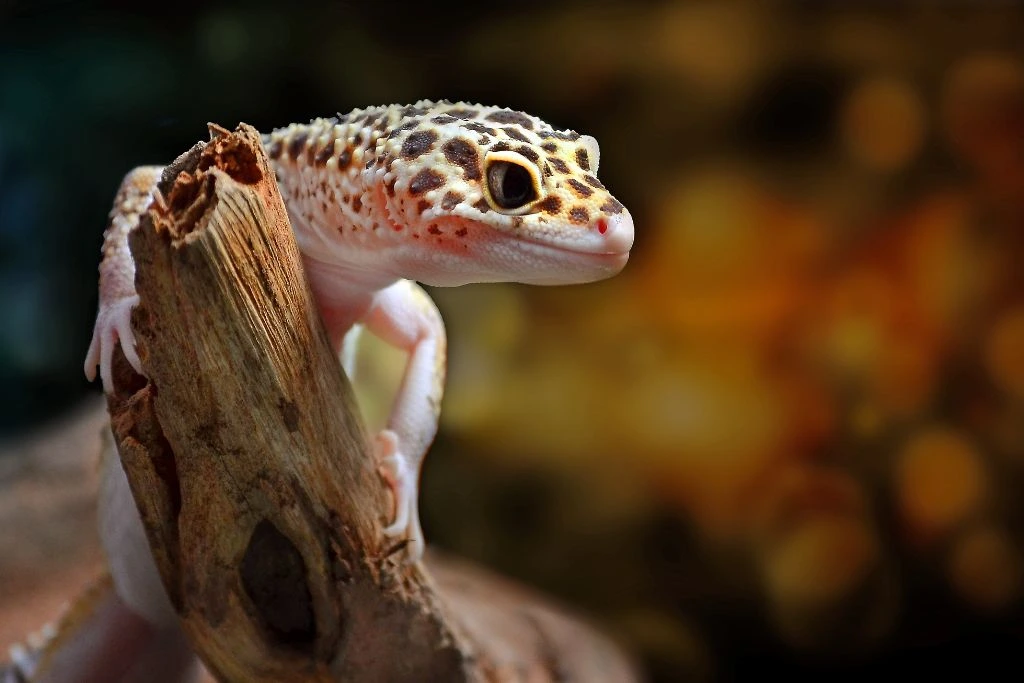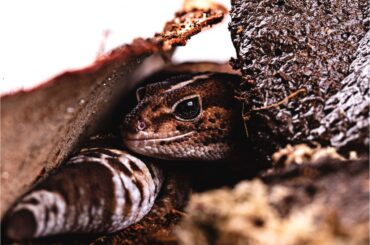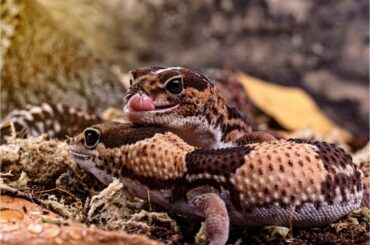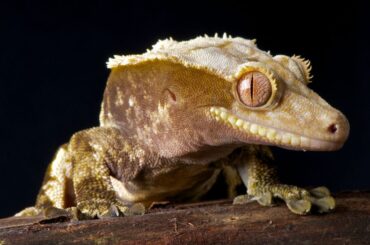Yes, leopard geckos can see at night.
Leopard geckos are beautiful, fascinating creatures. They have large eyes that give them an almost cat-like appearance and powerful eyesight. When you think of leopard geckos, you probably immediately think of their big eyes and how well they see in the dark.
In fact, their vision is at its optimal state when they are in the dark. They are also unique for discerning colors better than any other vertebrates. Their ability to see helps, as they are nocturnal reptiles. They need their vision to be 100% when they explore at night.
In this article, we’ll dive deep into the fantastic ability of leopard geckos so you can take better care of them and provide them with the necessary resources to stimulate their senses.
Do Leopard Geckos Have Night Vision?
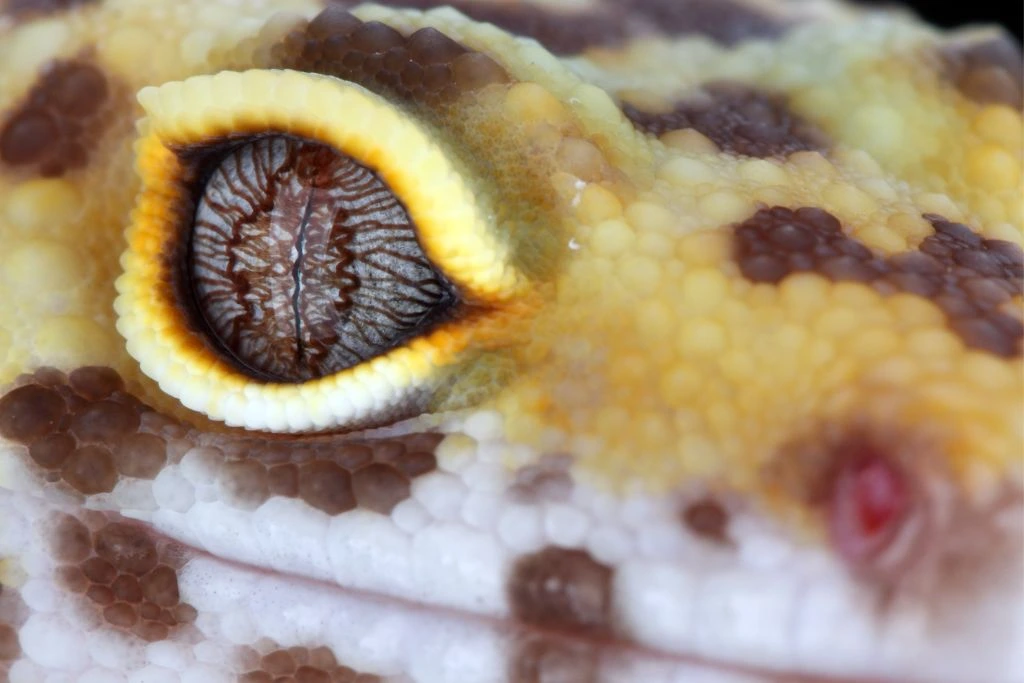
Leopard geckos are nocturnal, meaning they’re active at night. When you consider that leopard geckos have eyes that are extremely sensitive to light, it’s not surprising that they can see in the dark.
But what do they have that allows them to see better in the dark? Leopard geckos have bulging eyes and intricate patterns flecked with metallic hues. More than that, their retinas, highly sensitive to night vision, allow them to see. Leopard geckos can also detect motion even when there isn’t enough ambient light present for them to be able to identify what’s going on around them.
But this doesn’t mean they can’t see well during the day. Leopard geckos also have excellent vision during daylight hours. They see well enough to hunt for prey and avoid danger from predators, such as cats and birds of prey.
You may notice they have vertical pupils that transform into tiny slits. This helps prevent sunlight from damaging their eyes.
Do they have night vision? It’s not really night vision, per se. They are just more sensitive to light than humans.
What Do Leopard Geckos See?
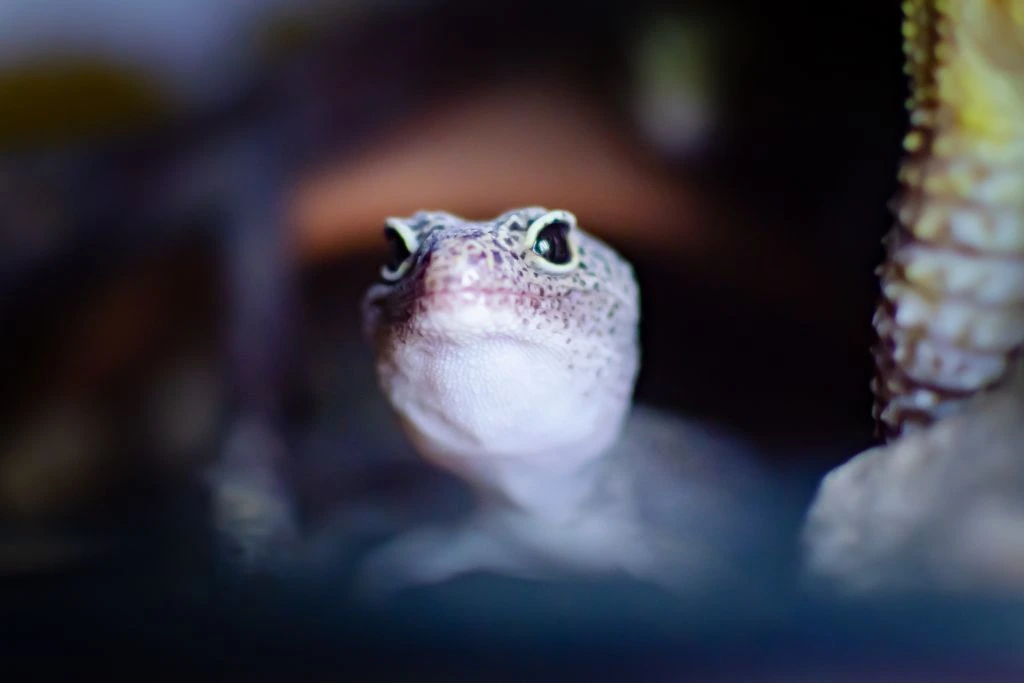
Leopard geckos have a range of vision that is similar to humans. Can leopard geckos see color? Yes, they can see colors and light but cannot see in complete darkness. This means they still need a bit of light for their eyes to function.
Leopard geckos have been known to hunt prey in the wild, but they aren’t very good at it because they don’t have binocular vision like humans do. Most nocturnal geckos no longer have fovea, which gives them binocular vision. Instead, they rely on their sense of smell as well as touch, which comes in handy when stalking prey. However, diurnal species have binocular vision.
When it comes to colors, the presence of cones helps them see colors. However, it’s not as wide as humans’ range. Leopard geckos are most sensitive to green and blue. They cannot see red. They are less sensitive to yellow. So, if you’re putting colored light in their habitat, use yellow or red. Giving them blue-colored light can damage their eyes when exposed for longer periods.
Leopard gecko eyesight is 350 times better than humans in the dark, yet humans can detect more colors than these reptiles.
Do Leopard Geckos Need Darkness at Night?
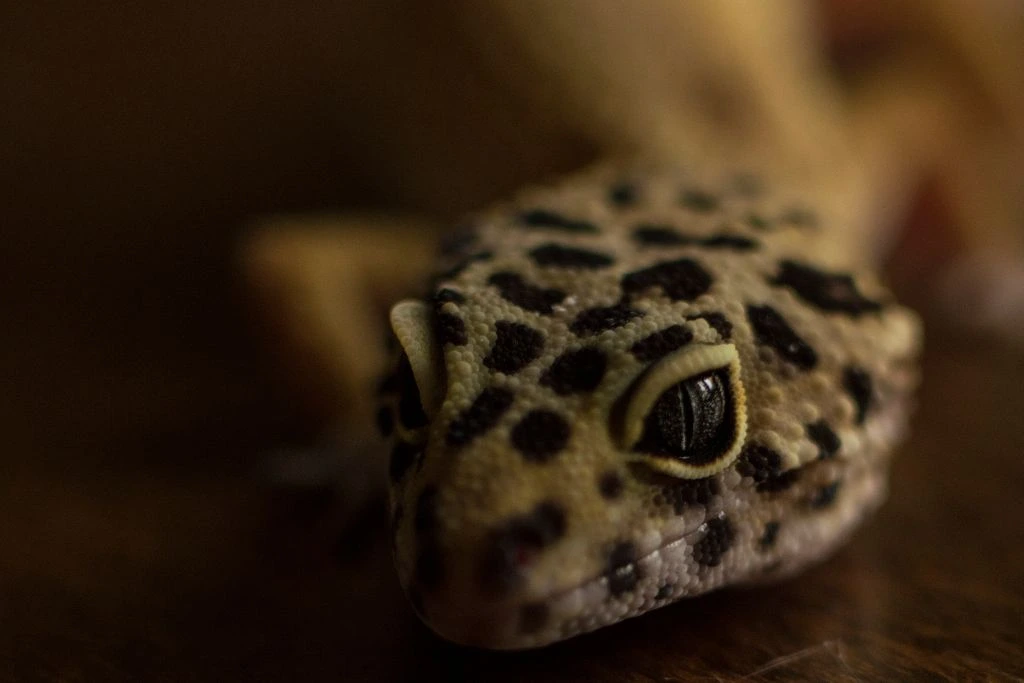
Many ask, “Do leopard geckos see better in the dark?” The answer is most leopard geckos are nocturnal. They spend their days resting and sleeping, which is why they need a place to hide during the day. However, leopard gecko vision in the dark is fine. They do better in the dark.
Leopard geckos have a vision that allows them to see movement at night and even small details, like individual hairs on an animal or insect. This makes them good at hunting prey because they can detect where their meal is hiding before it has time to run away from them.
They shouldn’t have any light that can disrupt their sleep schedule. You might argue that putting red-colored bulbs would be appropriate because geckos won’t see them. However, these reptiles can still see the emission from the bulb.
If you wish to keep an eye out for them at night, only use lighting for a limited time. If possible, the lighting should not be directed toward their cage.
Here is some equipment that you can use:
Incandescent Heat Lamp
You should only use an incandescent heat lamp as their daylight lamp.
Leopard geckos need a warm, dark place to sleep. This can be achieved by using a heat lamp or night light. A heat lamp will provide heat and help keep your gecko warm at night, while the bright light from a nightlight may cause them to hide or even wake up when they see it.
Ceramic Bulb
You may also use a ceramic heat emitter, specifically if you have a wooden enclosure. Higher wattage of 75W or 100W may be necessary if you have a PVC or glass tank set up, respectively.
Night Light
As mentioned, the best color of night light is red or yellow lights. You can use blue light to stimulate their vision, but not when they need to sleep because it may hurt their eyes, as they are extremely sensitive to it.
The traditional black light should only be used for limited hours if it’s incandescent. If not, best not to use them, as it, too, can disrupt their sleep. Blacklight has high UVA light levels that can cause eye damage.
Thermostat and Timer
You must have a temperature regulator to monitor your heat lamp. A timer is also necessary so you can regulate and limit your leopard gecko’s exposure to bright light. One of the leopard gecko eyesight problems is blindness, which can result from overexposure to bright light, particularly UVB.
Once they have eye issues, it’s best to bring them to your local veterinary to run a quick check on the cause and provide treatment.
Conclusion
Leopard geckos are fascinating animals. They have a lot of adaptations that allow them to survive in their environment, but they also have some interesting abilities that make them more than just another creature.
One of these is their ability to see quite well in the dark. This is important for them because they spend most of their time on the ground, and so they need to be able to see well enough at night.

